Forum Replies Created
- AuthorPosts
-
and a new CR2450 battery will arrive with the capacitors!
Where is this CR2450 battery located? I don’t think I have noticed one while working on my Ouverture.
Thanks for commenting.
Do you happen to know any system model numbers they are used in?
2 February 2024 at 01:52 in reply to: Stored/Unused B&O Equipment – Potential Deterioration of Components #52295As the Beolink passive also use pin 1 for powering up I would expect the same result for that, but interesting to hear what you are going to find out when testing it.
I tried the BeoLink Passive with the BC2300 today, and there is indeed no muting.
Even though it seems a little odd I think I know why the Bc2300 (and probably other) works this way with Pin 1.
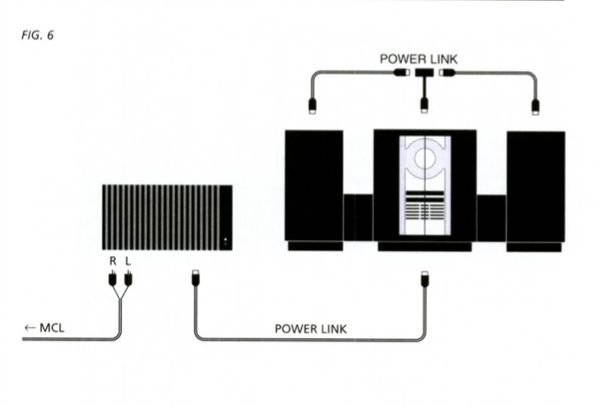
To be able to work as a master unit in a MCL2 network (as shown in the above picture) the amplifier for the MCL2 network cannot be muted even though the local speakers are. as listening in link rooms should still be possible.
I take it that you replaced with standard (non-SMD) caps?
Actually I bought SMD caps, but they where a little difficult to source, and also not that easy to solder on the board. So if there is space enough I would recommend standard caps.
1 February 2024 at 12:33 in reply to: Stored/Unused B&O Equipment – Potential Deterioration of Components #52293Always read the manual Was looking for some other MCL2 related stuff and came upon this in the MCL2 installation manual Is seems to have a very specific purpose for the wall anchors supplied with the MCL2P
Ah, brilliant – thanks for that! I will sleep easier tonight!?
you are welcome 🙂
1 February 2024 at 11:26 in reply to: Stored/Unused B&O Equipment – Potential Deterioration of Components #52291Also in the MCL2P box – solid plastic plug 42mm long. Any ideas what for?
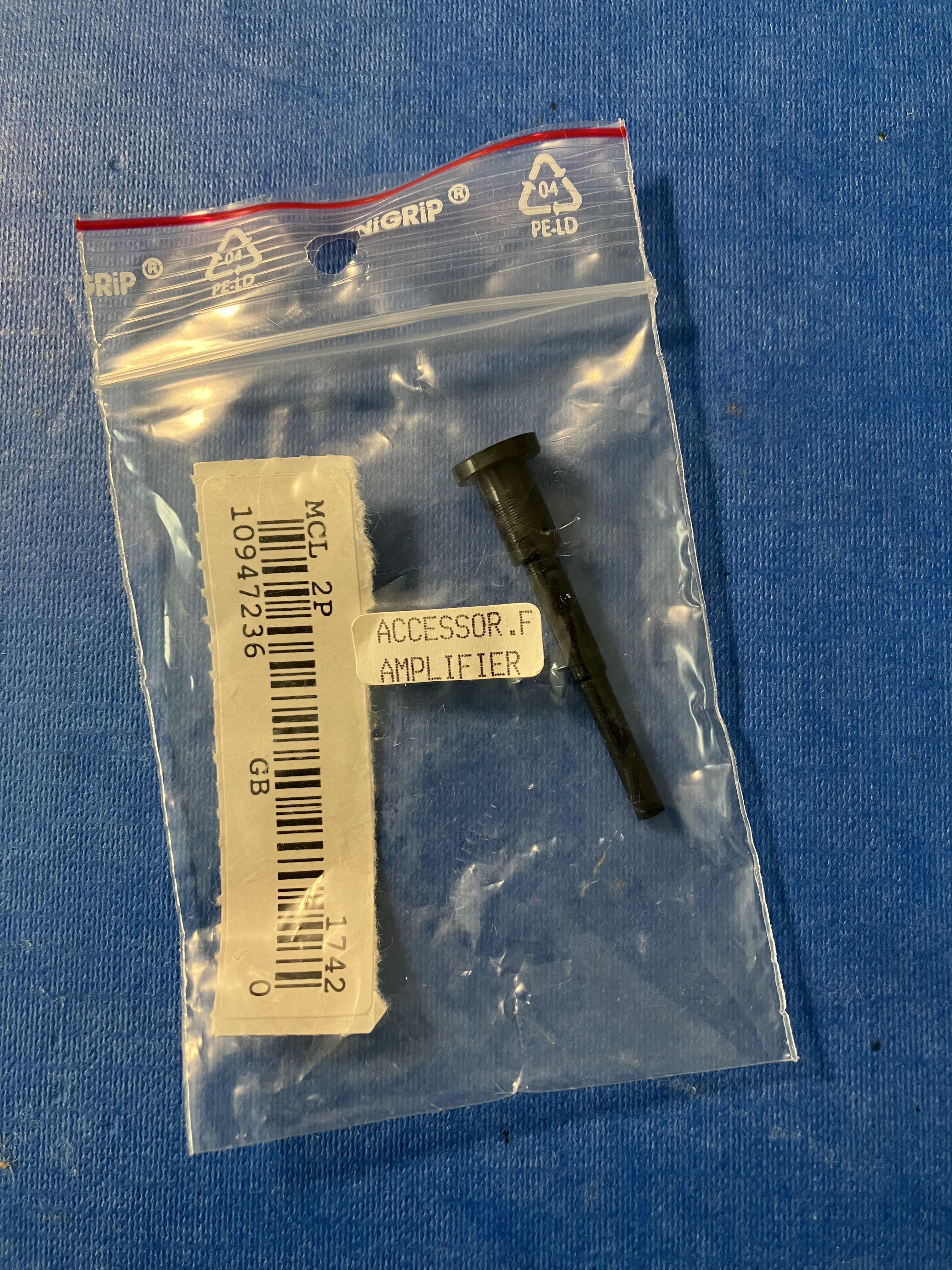 Perhaps the unused type number label is the MCL2P ‘accessory’, and the plug from elsewhere – the BC2300 perhaps?
Perhaps the unused type number label is the MCL2P ‘accessory’, and the plug from elsewhere – the BC2300 perhaps?Always read the manual 😉
Was looking for some other MCL2 related stuff and came upon this in the MCL2 installation manual
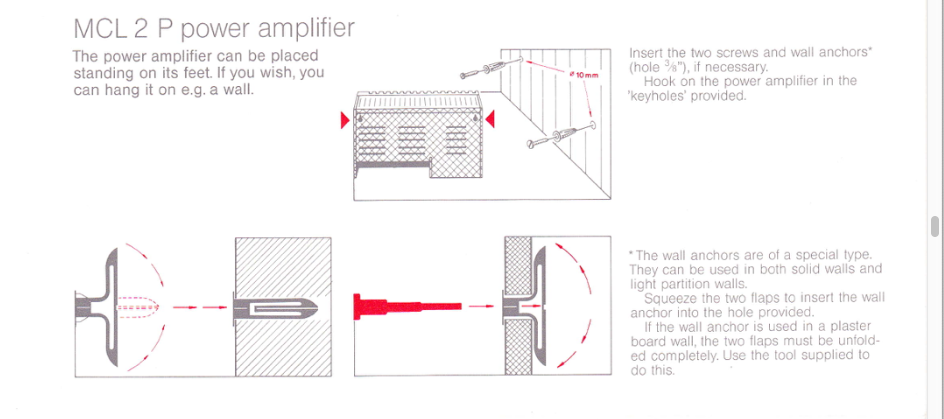 Is seems to have a very specific purpose for the wall anchors supplied with the MCL2PThanks for the info. very good points
Is seems to have a very specific purpose for the wall anchors supplied with the MCL2PThanks for the info. very good pointsAs far as I know the pin code is stored in the socket unit. I have two BC2 here. One with pin code enabled, the other came disabled. I remember connecting the “pin code” head unit to the other socket unit (several un-powered hours in-between). It then didn’t ask for the pin code, so…
Ok that is indeed worth to know. Funny enough the one seller who is selling a socket unit also sells a head unit separatly and tells that he has the pin code for that. But Of course if you don’t know it it would make more sense that the pin cpde was in the head unit.
Watch out for sticky soft touch paint on the head unit.
Did not even think about that. But that is an issue with a lot of products from that era. I also have a sticky Beolab 7.1 and Beomaster 5.
Also worth checking the display for signs of wear. The VFD technology used has a limited life-time. If people let it running 24/7 or enabled the standby clock some pixels will be worn out heavily and pretty dim while other will still be bright. While it still functions then it will just look bad.
Yes this might be a deal breaker. And for the sellers who only sells the head unit this will not be possible to check before buying.
The wing mechanism tends to stop working properly. Usually caused by a slowly failing rubber belt.
This I was expecting as I can see that the Beoparts shop has the belts for it.
Anyone knows what to expect about laser durability?
I can chime in on the brittle plastic. I think I have damage on at least 3 screw post on my ouverture.
I also think Matador has mentioned this as an issue with these systems beforeI also got a bargain for a Beogram 2000 some time ago. 200 Danish kroner which equals arround 23 punds at the time. It was in working condition but without a pickup an scratches on almost every aluminimum part and the dust cover.
Last week I found another Beogram 2000 for the same price which is in much better cosmetical condition, but where the pickup arm i broken off.
I now hope I can combine the best from these 2 decks and get a decent Beogram out of it for almost the same bargain price that you got yours for
Interesting 🙂 looking forward to your results with this project.
The decoder/servo board looks much like that in my Ouverture. At least the caps are the same values.
I removed the old capacitor holding them with pliers, pushing down and twisting them back and forth. This method is described a lot of places, and seems to be a very safe vay to remove the caps without damaging the PCB traces. After the removal the component legs has to be desoldered, but that is quite easy, maybe with some added solder.
30 January 2024 at 09:18 in reply to: Beocenter 9300, after replacing CD works ALMOST perfect. #52500Hello both
I would expect bothe the mechanism and the decoder board to be replaced to. In case of Beocenter 2300 and Ouverture my thinking was to replace the whole unit that are held by the to springs.
The reason for thinking og this is beacuse og the issues with the linear alser, ut also because relativly often I am able to find a defective Ouverture/2300/2500 cheaper than a new laser from Beoparts shop.
30 January 2024 at 06:37 in reply to: Beocenter 9300, after replacing CD works ALMOST perfect. #52495Hi Guy: What is your experience with the Philips CDM12 linear pickups? I used to have Beocenter 2500 (Radial Pickup) and a Beocenter 4000 (Linear Pickup). I found that the radial pickups will play anything… pressed CDs as well as CDRs with no problems. The linear lasers seem to be more picky. My BC 4000 plays pressed CDs fine. It doesn’t do well on CDRs even after laser change. It seldom plays CDRs perfectly from beginning to end. Some CDRs are unreadable others will skip near the outer tracks. Derek
Hi Derek – similar experience for me: Both mine and Mother-in-Law’s BC9500s CDs have always played fine with all CDs, as has my early model radial laser BC2300. The linear tracking late model BC2300 that I took out of storage last week is the first CD that I have had major problems with, and I am about to dismantle and investigate further. Also both my BeoSound 1s initially had CD problems but are both now playing well after a light clean and running CD test modes to ‘exercise’ the laser pickup!
Does anyone know if these drive mechanisms are interchangeable, or if other components and/or software versions are required for that to work?
My thinking here is if the linear type is unreliable there are lot of defective systems out there with the other type of CD mechanism to pick spare parts from.
30 January 2024 at 06:34 in reply to: Stored/Unused B&O Equipment – Potential Deterioration of Components #52289Yes the 15v (measured 14.75V no load) is always on
Ok good to know.
One thing that I remember from before is that the BC2300 will not ‘mute’ the MCL2P, despite using a fully wired PL cable. I have a(nother) Passive arriving in the next few days so I will check mute with that also.
This might be related to the fact that the MCL2P only use pin 1 in the powerlink connector for powering up. This thread https://beoworld.dev.idslogic.net/forums/topic/powerlink-power-up-vs-speaker-on/ mentions pin 1 as powering up and pin 4 as a mute function on older powerlink speakers.
Looking at the diagram for the powerlink connector on the BC2300 it shows that PIN 1 is connected to 5V supply through a small resistor, and therefor probably not related to the mute function of the BC2300, but still having power when the BC2300 is on.
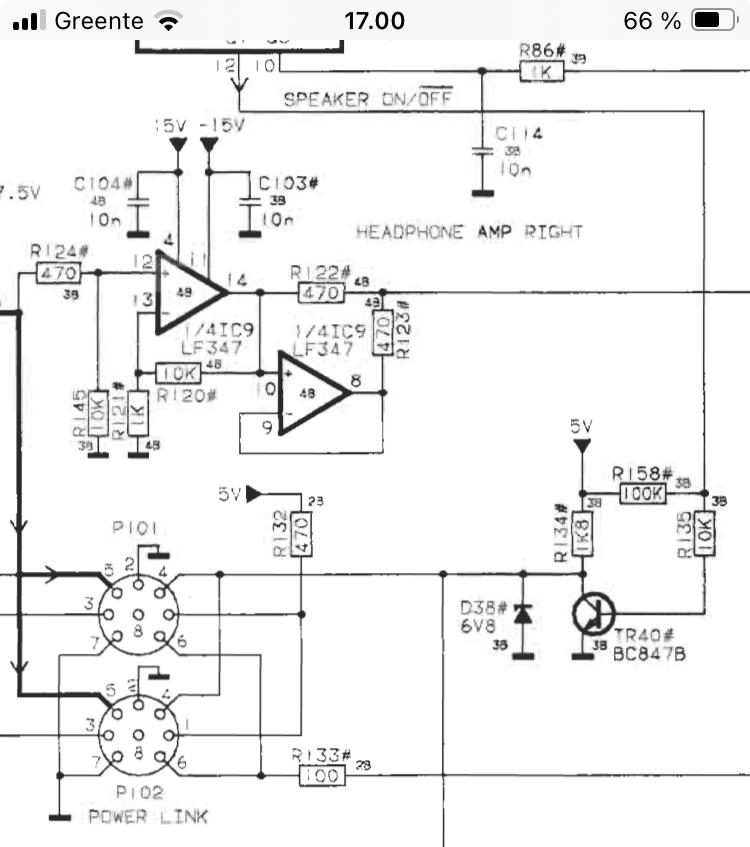 As the Beolink passive also use pin 1 for powering up I would expect the same result for that, but interesting to hear what you are going to find out when testing it.30 January 2024 at 02:38 in reply to: Stored/Unused B&O Equipment – Potential Deterioration of Components #52287
As the Beolink passive also use pin 1 for powering up I would expect the same result for that, but interesting to hear what you are going to find out when testing it.30 January 2024 at 02:38 in reply to: Stored/Unused B&O Equipment – Potential Deterioration of Components #52287Also in the MCL2P box – solid plastic plug 42mm long. Any ideas what for?
I seem to remember seeing something similar in white before, but can’t remember what it was for.
Guy wrote: The connectors are actually a little strange – the external contact has a small plastic sleeve on it that will slide up and down. I am not sure of the purpose, but it does need a bit of force to push it into the MCL2P socket, whereupon there is a positive ‘click’ once fully inserted: Interesting with the design of that connector as the connector I am using for mine is not sitting very well in the socket, and as the MCL2AV is designed to have the connections downwards this design would sure help to keep the the connector inside.
I actually discovered that I have one of these conenctors, so I might as well put it on my power supply for the MCL2AV to help secure the connection better.
MCL2P with Original Instructions and the 15v cable for powering MCL2AV
Have you tried testing the MCl2P yet? I was wondering if the 15V output for the MCL2AV is always on? I guess I has to be on in standby for the MCL2AV to be active, and then the MCL2AV can wake the MCL2P from standby via powerlink.
Earlier on i this thread i did some testing where I connected the Beolab 3500 MK1 MCL connector on some of the products I had then.
I managed to do some control of a Beocord 3500 connected to a MCL2AV by controlling it from the Beolab 3500 IR eye.
However using the powerlink connection on my Beocenter 6 to connect to the Beolab 3500 I was not able to do anything
Since then I have got some more B&O stuff and have now tried to connect the Beolab 3500 MK1 to the powerlink connections on Both a Beomaster 4500 and a Beocenter 9300.
The cable for this connection is wired like this:
Powerlink pin 2 – > BL3500 pin 3, 5 and 7
Powerlink pin 3 – > BL3500 pin 1
Powerlink pin 5 – > BL3500 pin 4
Powerlink pin 6 – > BL3500 pin 6
In both cases I was able to control the sources on the Beomaster and the Beocenter, and the Beolab 3500 display was showing the source that was playing. When i blocked the IR eyes on the Beomaster and the Beocenter they would start up in a muted state like when the are controlled from a link room.
This setup more or less corosponds to the setup where a Beolink passive / ML-MCL converter is used to convert powerlink to MCL.
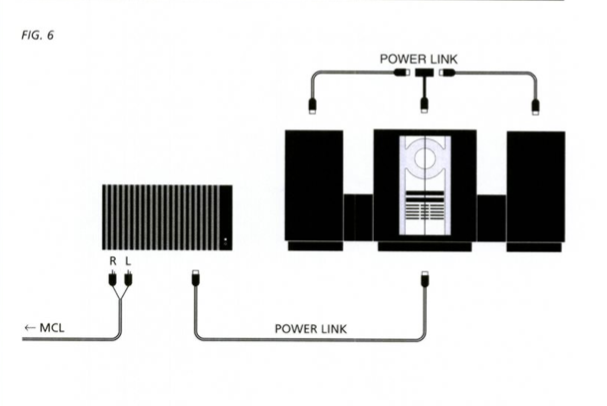
This explains why this works. In this case however the amplifier is not nessecary as the BL3500 is an active speaker.
Not the usual bottle opener design
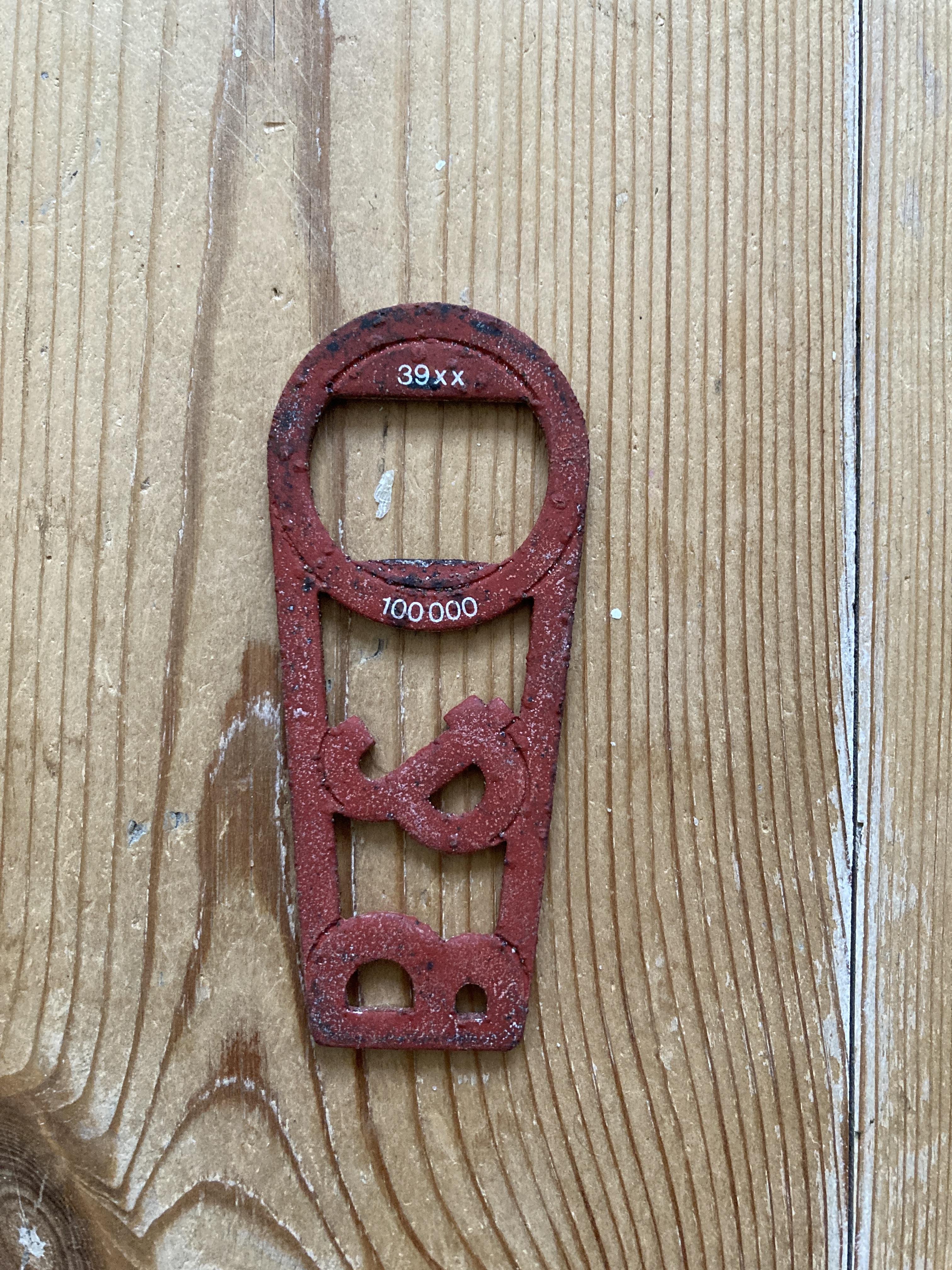 Unfortnuatly corrosion is showing its signs on it.
Unfortnuatly corrosion is showing its signs on it.My father tells me that is was given to the employes when 100.000 of the type 39xx series TV was made.
This my father used when he was doing layout sketches of PCB traces for B&O tv’s in the 80’s before it was compuerized.
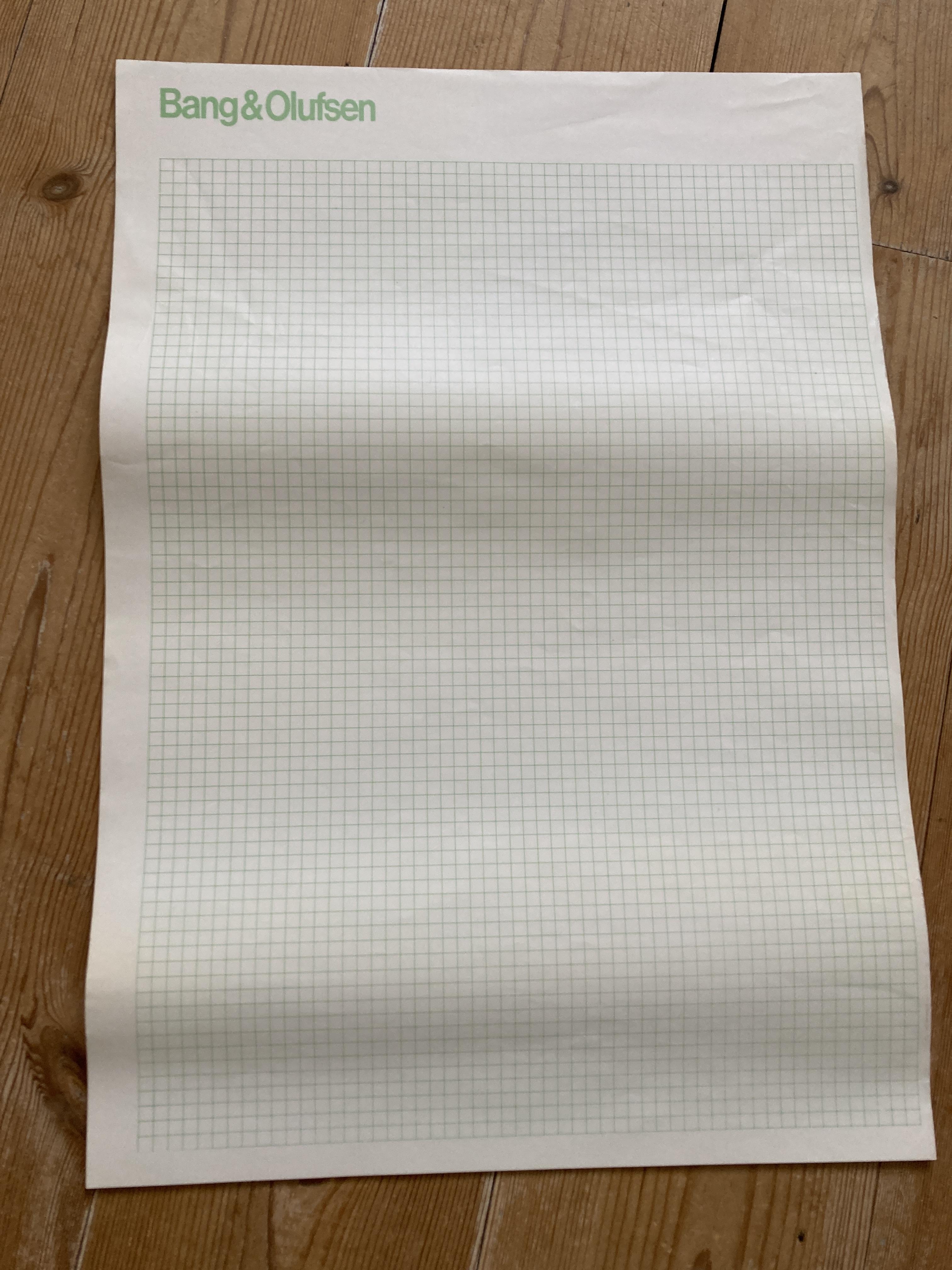
I remeber he had some black tape in different withds and alsosome small round dots to use where the component legs should be.
One other thought: My original BeoSound 1 (used for tests) is at SW version 1.3, and my newer one at SW1.4. I think that the later BS1s (with built in clock) have SW versions 2.X. – I doubt that there are any differences and if anything B&O would probably reduce any link capability in the newer versions. Any idea of your parents’ BS1 SW version?
I just checked this as I am here. There are two different version numbers. The APP version is 2.5 and the OS version is 1.0.
I am at my parents now and have the logic analyzer hooked up to pin 6 and 7 on the AUX connector on their Beosound 1.
As might have been expected I don’t see any reaction to any commands I try to use on the remote including A.MEM which activates the AUX connection.
So i guess that we can put down any hopes of control options through this connection
26 January 2024 at 09:50 in reply to: Stored/Unused B&O Equipment – Potential Deterioration of Components #52283MCL2P with Original Instructions and the 15v cable for powering MCL2AV,
I did not expect the 15V cable to be gray, but what do you know. On the other hand these connectors was also used on the Beolit power supplies so they might have had plenty in stock.
All will be carefully tested over next few days and I will report back any interesting findings!
Very intererested to hear about the testing of the bottle opener and if that will bring interesting findings 😉
I just wondered if there was any further progress on getting the CD working on your Ouverture?
Not more than described in this thread. I still have the issue where I have to press CD twice to make it play.
I also found a YouTube video that may be useful, here: https://www.youtube.com/watch?v=0tmWOhNxZpI
I also used that video a lot when I disassembled the Ouverture. Very good althoug a few details I couldn’t see so had to find info elsewhere.
As I see it I can try three potential fixes: Deep cleaning of laser New laser kit Replacement of SMD caps on CD driver board I don’t have any time until next week at the earliest, but my current plan is to dismantle CD module and clean, and order/fit replacement capacitors. Based on experiences earlier in this thread, I will try to avoid replacing the laser at this stage. Any thoughts?
Well I did not have any luck with the deep cleaning of the laser.
But the replacement laser also did not work that well before i replaced the SMD caps.
My tactic was that it couldn’t hurt to try the deep cleaning og the laser other that taking time, and now I have got some good practice in disassemebeling the unit.
Btw. I have also tried to put the original laser that was deep cleaned back in just to see if it would work with the new SMD caps, but it still had the original issues.
- AuthorPosts
